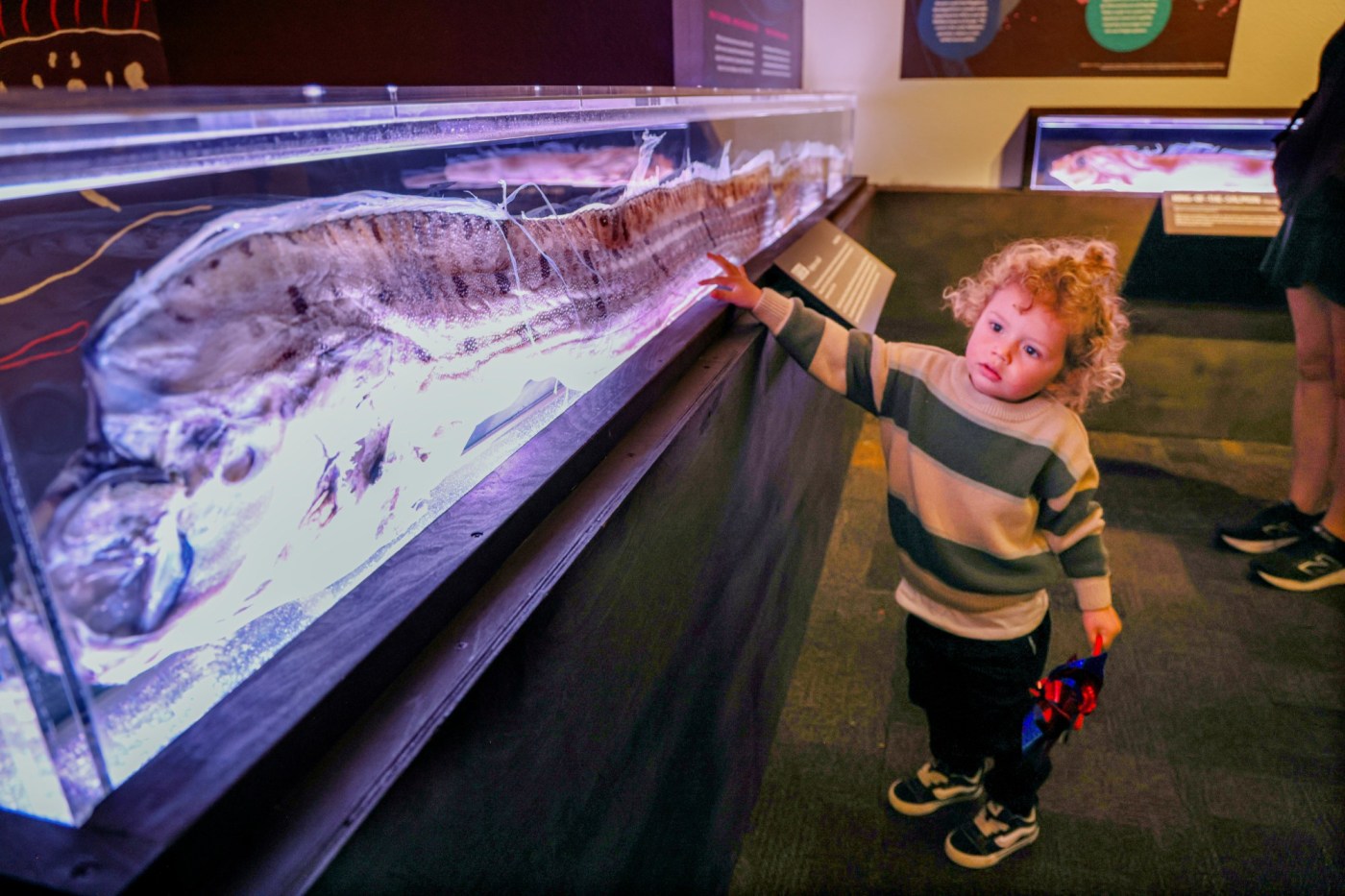
What do you do with a bizarre-looking dead fish that’s missing an eyeball and could be mistaken, at a distance, for a monster rattlesnake?
If you’re the Birch Aquarium in La Jolla, you preserve the fish, put it on display and hope it attracts attention.
Related Articles
San Jose hilltop ranch property sells for $5.5 million in open space deal
Am I helping birds by putting out dryer lint? Yarn? Dog hair?
Why do birds have different types of wings?
SPCA Monterey County rescues dozens of malnourished pelicans
Earth Day: How Trump’s environmental decisions are affecting California
Workers had barely put the 11-foot, 2-inch oarfish in place Friday when patrons began crowding in for a look. Interest has soared since then, especially among wide-eyed children.
“They all want to know whether it’s real,” Brian Gibson, a Birch exhibits fabricator, said Tuesday.
This oarfish, on display at Birch Aquarium in La Jolla, washed up dead in Encinitas in November. (Photo by Sandy Huffaker for The San Diego Union-Tribune)
The animal is one of two oarfish that were found dead on the San Diego County coastline last year. The first, measuring about 12 feet long, was discovered in August in La Jolla. The second, which ended up at Birch, was found on Grandview Beach in Encinitas in November.
The discoveries were startling because oarfish, which can grow up to 25 feet long, are deep-water creatures that are rarely seen at the surface. Fewer than 25 oarfish have been found on California beaches since 1901.
The creatures also stirred interest because, in popular Japanese folklore, oarfish have long been called “doomsday fish” or “harbingers of doom”, because their sudden appearance was seen as a sign that an earthquake or tsunami was about to occur. Scientists say the lore is entirely without foundation.
The two found locally last year ended up the aquarium’s parent organization, UC San Diego’s Scripps Institution of Oceanography, which placed the oarfish in preservatives.
The La Jolla oarfish was already looking rough. But the one from Encinitas was in quite good shape, apparently because it was found shortly after it died.
Researchers and science-minded snorkelers carried a dead oarfish from La Jolla Cove on Aug. 10. (Michael Wang)
“There was minimal damage from scavengers like gulls,” said Ben Frable, senior collection manager for marine vertebrates at Scripps.
He later worked with colleagues to build a long, narrow, clear acrylic display case. The 45-pound oarfish — intact save for a tiny bit of its tail — was threaded into the case last Friday, then transported up the hill to the Birch, before Scripps even had time to put together an advertising campaign.
It’s unlikely that Scripps could have found a live specimen on its own. Oarfish can dive upwards of 3,200 feet deep, in dark waters, far out of the easy reach of humans.
“Each new specimen deepens our understanding of this enigmatic fish,” Frable said in a statement. “With their long, silver bodies and striking red fins, emerging from the vast ocean, oarfish have long fueled human imagination.
“I hope that seeing these specimens in person fosters a deeper appreciation for them — not as mythical creatures, but as remarkable living beings that share our world.”